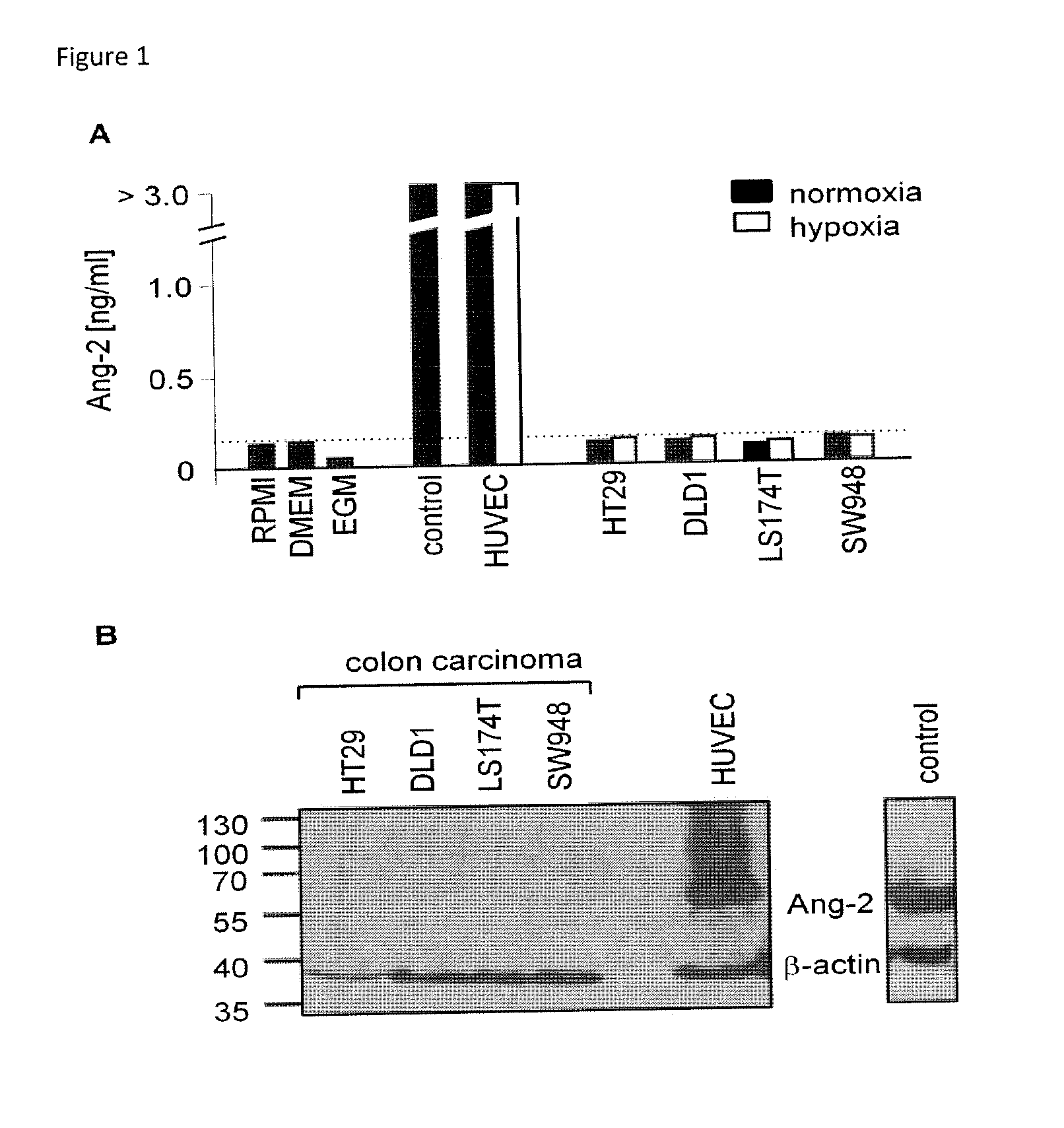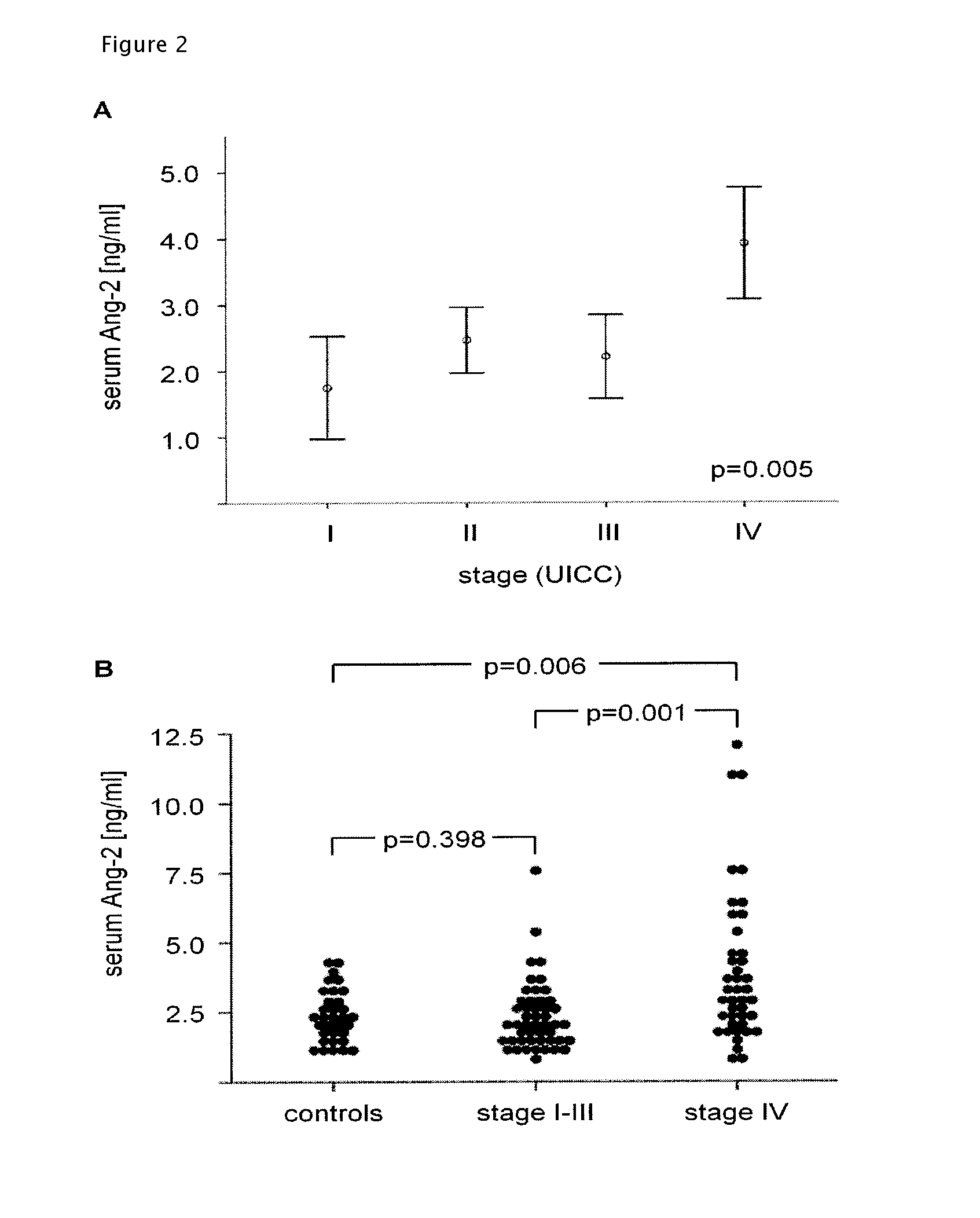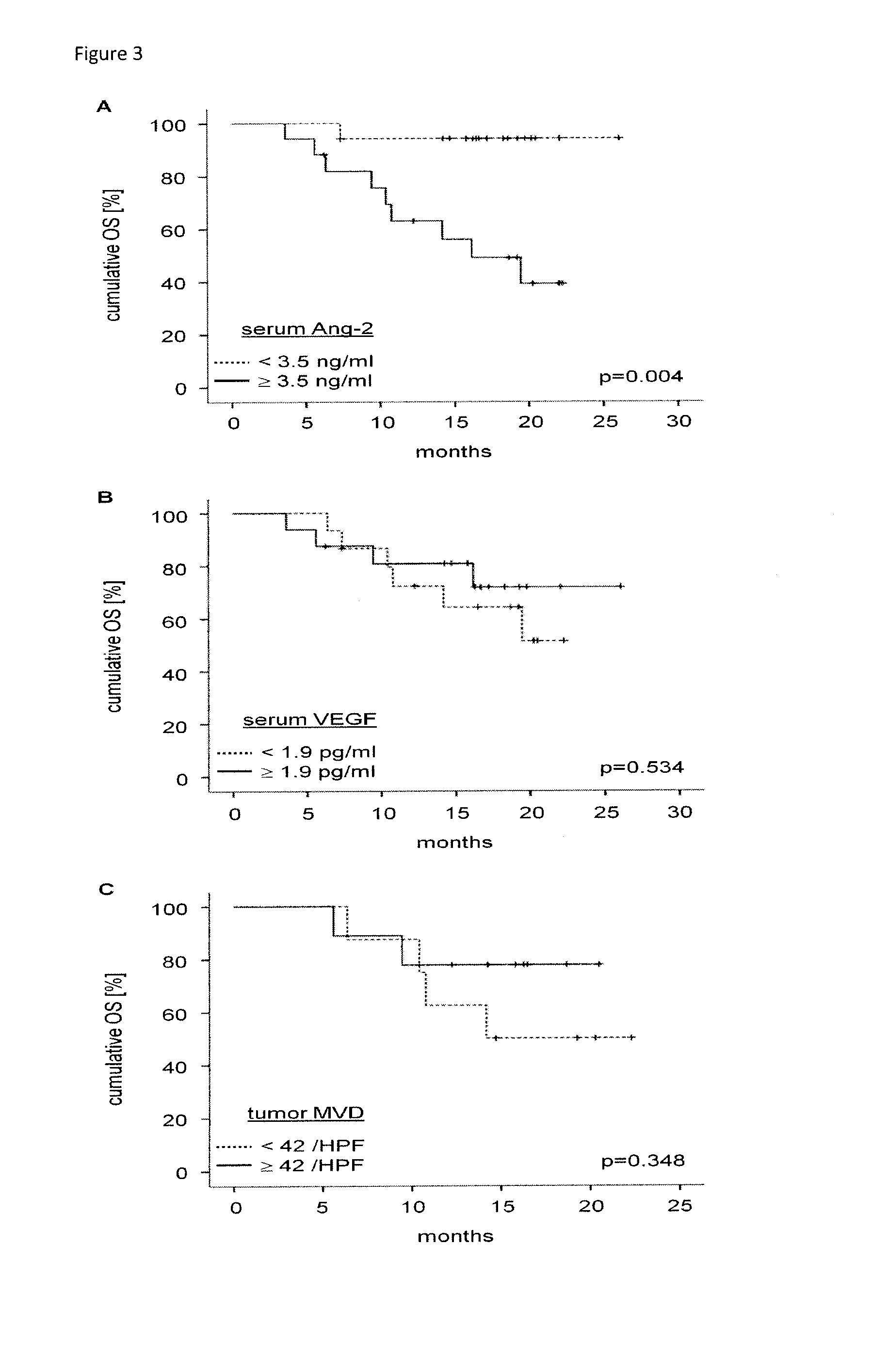Biomarker for colorectal cancer
a colorectal cancer and biomarker technology, applied in the field of colorectal cancer biomarkers, can solve the problems of increasing toxicity and cost, not allowing differentiation between different stages of cancer, and less likely to be curabl
- Summary
- Abstract
- Description
- Claims
- Application Information
AI Technical Summary
Benefits of technology
Problems solved by technology
Method used
Image
Examples
examples
Patients, Material, and Methods
Clinical Samples
[0098]A total of 90 patients with colorectal adenocarcinoma and 33 healthy volunteers were studied. One cohort of 56 patients had newly diagnosed CRC of various stages (UICC I-IV). After obtaining informed consent, blood serum and tumor tissue was collected at the time of primary resection. A second cohort of 34 patients had primary or relapsed CRC of advanced stage and received a combination treatment of bevacizumab and chemotherapy either in the context of a clinical trial (AIO 0604, n=15) at the Department of Internal Medicine of the University Hospital of Bochum or without participating in a clinical trial (n=19) at an oncology outpatient clinic affiliated with the Comprehensive Cancer Center of the University Hospital of Cologne. From these patients, blood serum was taken before the start of treatment. Demographical, clinical and histopathological baseline parameters were carefully documented. For patients receiving bevacizumab-con...
PUM
| Property | Measurement | Unit |
|---|---|---|
| diameter | aaaaa | aaaaa |
| diameter | aaaaa | aaaaa |
| concentrations | aaaaa | aaaaa |
Abstract
Description
Claims
Application Information
 Login to View More
Login to View More - R&D
- Intellectual Property
- Life Sciences
- Materials
- Tech Scout
- Unparalleled Data Quality
- Higher Quality Content
- 60% Fewer Hallucinations
Browse by: Latest US Patents, China's latest patents, Technical Efficacy Thesaurus, Application Domain, Technology Topic, Popular Technical Reports.
© 2025 PatSnap. All rights reserved.Legal|Privacy policy|Modern Slavery Act Transparency Statement|Sitemap|About US| Contact US: help@patsnap.com



